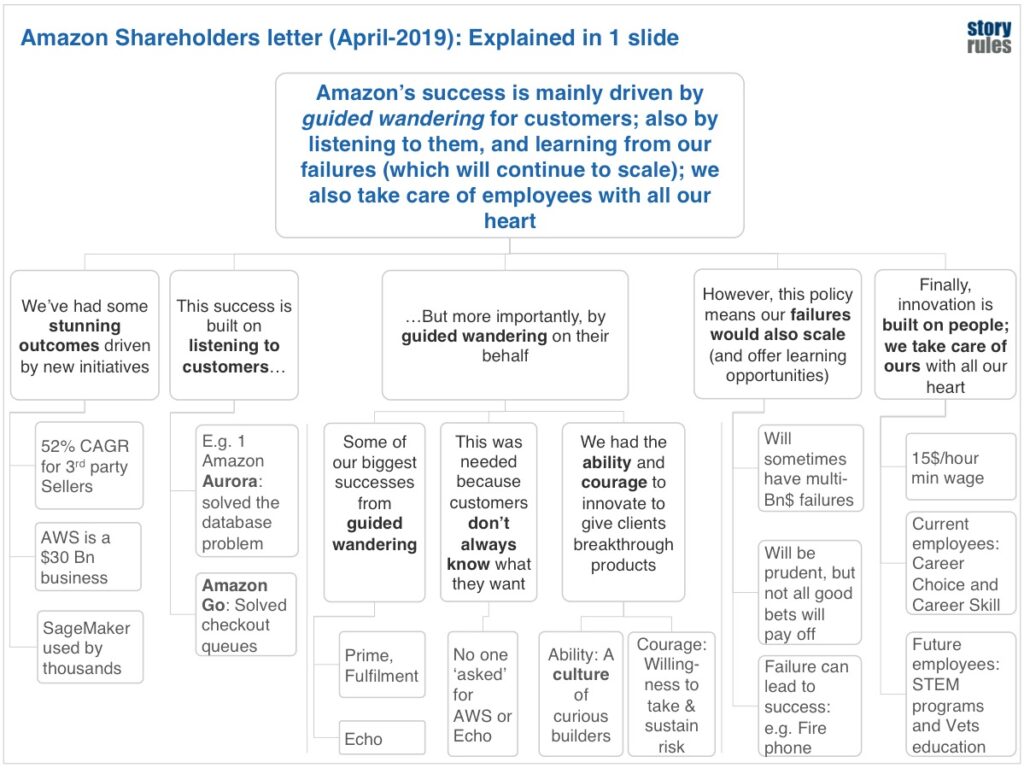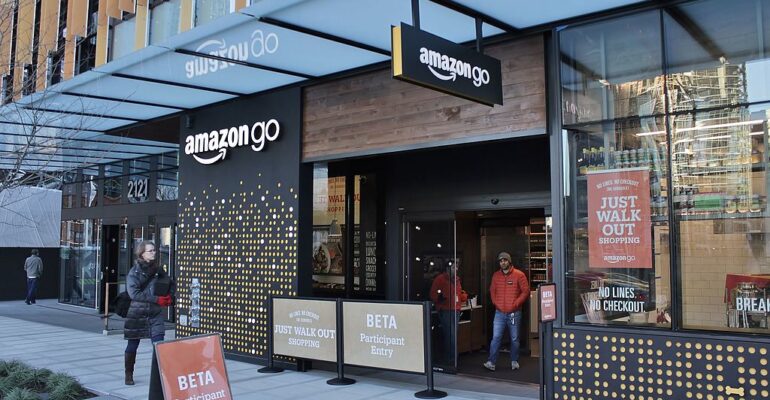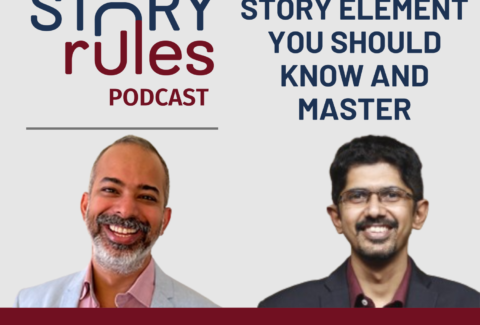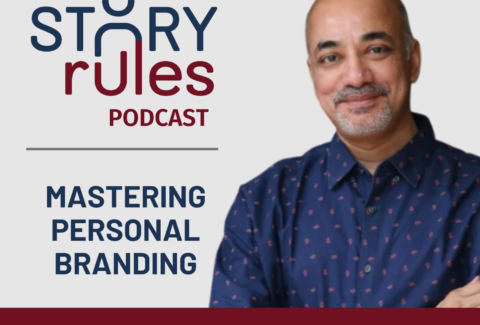Amazon’s 2019 shareholder letter: Top 3 storytelling lessons
Jeff Bezos published Amazon’s much-awaited annual shareholders’ letter on 11th April. It made the headlines for one particular inclusion: his ‘challenge’ to retail competitors, to match Amazon’s $15-an-hour minimum wage and employee benefits.
Looking deeper into the document though, there are some critical storytelling lessons that can be gleaned. Here are my top three:
I. Make it Surprising
II. Make it Structured (here’s where we look at the 1-slide summary)
III. Keep it real and relatable
Let’s examine each one.
I. Make it surprising
I have blogged earlier about the value of surprise (using the principle of norm-variance) to get the audience’s attention. Bezos uses it multiple times in the letter:
- Start with a surprising fact (almost shrouded in mystery): He starts with a startling fact of how their third-party business has grown at a 52% CAGR (compounded annual growth rate), more than double their first-party business. That surprising fact gets our attention and we are curious to know the underlying reason.
- Continue to use norm-variance throughout, to make facts stand out
- eBay comparison: While the 52% CAGR sounds impressive, what if that was the standard industry growth? In order to make that number stand out, he had to give a norm. And what better norm than the growth rate of eBay – the original third-party marketplace. eBay’s CAGR number turns out to be just 20%, making Amazon’s third-party growth rate massively higher. (Incidentally, Amazon did get a snarky response from eBay… but that’s how these things get more fun right?!)
- Busting myths: To show how much headroom is available for growth, Bezos states that “90% of retail remains offline; more in other countries”. While there’s no ‘norm’ given in this case, it isn’t required. It is a surprising finding since many of us would assume that online retail is in a dominant position compared to offline.
3. Failure needs to scale too: On the face of it, this statement is surprising. Which leader would openly state that they will increase the scale of their failures? Bezos does. And then goes on to justify the same with clear arguments.
II. Make it Structured
We had earlier dissected the structure of Amazon’s 2018 letter. The 2019 one is shorter, but a bit more ‘wandering’ (keeping with the theme!). Having said that, it does have a clear flow, with 5 main points being made. Here is the 1-slide summary:

Here’s the detailed version of the same:
Amazon’s success is mainly driven by guided wandering for customers; also by listening to them, and learning from our failures (which will continue to scale); we also take care of employees with all our heart
- We’ve had some stunning outcomes driven by new initiatives
- Third party sellers have grown at a stunning 52% CAGR; more than double our first party sales
- AWS is now a $30 billion annual run rate business and growing fast
- Thousands of customers are building machine learning models on top of AWS with SageMaker
2. This success is built on listening to customers…
- E.g. Amazon Aurora: Companies felt constrained by their commercial database options and had been unhappy with their database providers for decades – these offerings are expensive, proprietary, have high-lock-in and punitive licensing terms
- E.g Amazon Go: Checkout queues
3. …But more importantly, by guided wandering on their behalf
- Some of our biggest successes are from guided wandering
– Prime, Fulfilment were key drivers of the Third Party growth
– Echo was a product of guided wandering
- This is needed because customers don’t always know what they want
– No one asked for AWS or the Echo
- We had the ability and courage to innovate to give clients breakthrough products
– Ability: A culture of builders. People who are curious, explorers, like to invent
– Courage: Guided wandering needs heart. Programs like Prime and Fulfilment were extremely radical when launched and were taken up at significant financial risk and after much debate. The path is messy and tangential
4. However, as we scale, this policy would mean our failures would also scale
- As we grow our failures will also grow – we will occasionally have multibillion-dollar failures.
- We won’t undertake such experiments cavalierly, but not all good bets will ultimately pay out.
- However, failures can be the stepping stones for success – e.g. the Fire phone’s failure gave learnings when building Echo and Alexa.
5. Finally, innovation is built on people; we take care of ours with all our heart
- Current employees: 15$ min wage
- Current employees: Career Choice and Career Skills training programs
- Future employees: STEM programs and Vets education
III. Keep it real and relatable
Just because you are making earth-changing moves, doesn’t mean that your language has to be a mystery to decipher. Bezos talks in conversational, everyday English and uses simple analogies where needed.
- Pithy, everyday language. Taking a leaf from Warren Buffet’s book, Bezos keeps his language simple.
- “Kicking our butt badly”. No MBA speak like “proving to be significantly challenging competitors”
- “No one asked for AWS. No one.” Emphasising the point, like how we would do in a conversation.
2. Analogy: Alexa compared to Star Trek’s first computer voice!
By employing so many storytelling techniques Bezos vividly illustrates the thought and effort that goes into crafting this critical document. And by the way, he must have been really busy with the personal developments during this period. Despite these distractions, he’s put out a stellar document.
Having said that, what could be better…
As always we will look at what could have been better. Three things according to me:
1. Flow breaks down: The letter’s structure was fine for the first two points (success and its drivers). But the third one doesn’t really flow from the first two. It seems like Bezos just wanted to highlight those points (higher wages, impact on community etc.) for building some good PR. This article from Fortune surmises it could be because of the threat of ‘anti-trust’ legislation against the Big Tech companies. Whatever be the cause, the letter suffers from not having a clear one-line theme (as compared to last year’s letter – which had a clear connecting concept)
2. Way too much technical detail: In the discussion on databases, the geek in Bezos takes over. We could have used some editing there, as well as an analogy, to explain to us non-techies!

3. The human element: Like last year’s letter, this one too skips giving any anecdotes or human stories underlying the numbers. How about putting the spotlight on a third-party seller who exemplifies the impressive growth? Or an employee who’s maximised her potential after taking the Career Choice program? These stories make your data more relatable.
The final word
In sum, despite not being the tour-de-force that the earlier letter was, the 2019 Amazon Shareholders Letter packs in a mean punch in making its points… and leaves us with valuable storytelling lessons as always.
*****
Featured Image Credit: Amazon Go in Seattle from Wikimedia Commons by SounderBruce [CC BY-SA 4.0]








